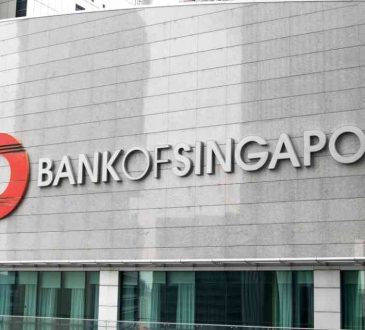Embarking Towards a Resounding Revival: Making Sustainable Technology Your Core Currency

The Consumer Product Goods (CPG) industry has undergone several significant shifts over the last few years. The role of digital in the CPG business has evolved and continues to, customer preferences have changed drastically, and compliance imperatives have driven the industry towards stricter, better, and customer-centric standards. In the last decade, however, global awareness of climate change and the need to go green has shot up: now, the sustainability imperative is knocking on the doors of the CPG industry too. While the discourse on sustainability has been previously steered by rising competition, supply chain challenges, reducing margins, and rising customer expectations, things have changed over time.
Today, green is the new black, and sustainable products drove half the revenue growth over the last few years of the decade ended in 2020. So how can CPG business make the move towards greener products, without hurting the bottom-line? Perhaps the industry has something to learn from the leading CPG brands, that have essentially hit two targets with a single arrow. In the race to the Industry 4.0 paradigm, all that CPG businesses are shifting focus towards digital investments under the umbrella of CPG4.0. This helps organizations converge people data and technology across the CPG value chain. Sustainable products and operations are one of the driving factors of digital transformation and way to make sustainable technology a digital currency of CPG businesses.
The sustainability impetus
Over the last few years, customers have exhibited an increasing inclination towards a shift to greener products and habits, and the urgency of the need to go green is also dawning upon governments. Sustainability questions like the origin of ingredients and raw materials, packaging, and carbon footprints are actively influencing customer choices today. Time for the CPG businesses to take a clue. Here are five key trends that are ushering businesses to recognize the value of sustainability in the market:
- Customer trends: Over 79% of millennials are loyal to brands that care about the planet, and 87% of Gen-Z’ers are worried about the climate.
- Social Responsibility: As climate-related concerns escalate in the list of society’s concerns, businesses need to make it theirs too.
- It sells well: Markets pumping greater investments at sustainable businesses is not the only marker of the market value of sustainability – customers are inclined towards climate-conscious brands too. Sustainability marketed products, therefore, grew 90% faster than their conventional counterparts.
- The future is green: While forecasts say that the share of sustainability-marketed products is likely to grow from $118 bn in 2018 to $140 bn in 2023, sustainability will drive the world of the future as climate change becomes an increasingly urgent action item in the agenda of governments, businesses, and individuals.
Sustainability looks like a lucrative proposition from the outside. But what happens behind the scenes? Can sustainability be profitable, and how should CPG companies approach it?
Making sustainability work: key trends
Some of the leading CPG companies are making sustainability their core currency today. Here are a few crucial ways in which trend is unravelling in the market:
- Sustainable origins: Many CPG brands now source their raw materials from suppliers that manufacture, mine, or produce their materials in ethical and sustainable ways.
- Sustainable packaging: Some CPG brands like Nestle and Unilever are partnering with brands that help them make paper mimic the qualities of plastic; others are experimenting with refilling models to shift the use of plastic from per-purchase to per-user.
- Sustainable delivery: As customers expect their products to arrive within one to two days of order placement, many brands are generating exorbitant amounts of carbon due to suboptimal use of shipping channels. Therefore, many are incentivizing customers to opt for slower deliveries by encoding them as a sustainable choice.
- Marketing sustainability: Brands like Dove and other Unilever products are bringing carbon footprints to their package prints, and claim that these products sell off the shelves faster than their conventional counterparts.
- Sustainability goes full circle: Customers opting for returns and over-production are key factors that move products from inventories to landfills. CPG brands like Philips are exploiting lessons from circular economic models to reuse components from products that customers no longer use, while also building lasting relationships with them.
The sustainability-technology link
At the core of modern-day CPG4.0 sustainability initiatives, are the use cases of disruptive technologies like AI and ML. As business becomes increasingly data-driven, sustainability imperatives are also turning to digital versions of principles like accountability, precision, responsibility, and customer voice.
Here are four crucial ways in which digital technologies sit at the core of sustainability initiatives in the CPG industry:
- Traceability: The idea of sustainable sourcing is made possible through the implementation of blockchain technologies that results in the ability to trace raw materials in the upstream supply chain and finished products (and their components) beyond their shelf lives.
- Visibility: As consumers begin to track their carbon footprint, it is becoming imperative for manufacturers to track the carbon footprint of their goods at a product/unit level. Moreover, it is crucial for CPG manufacturers to start viewing emissions as a cost that adds up to their product at every single stage – right from procurement of components/raw materials to last-mile delivery. Many are leveraging enterprise-wide control towers to achieve granular and exhaustive visibility into their carbon emissions.
- Supply chain planning: Today, many CPG businesses strive to replicate the one-day shipping models of leading retailers like Amazon. In the process, they often over-produce, ship orders in small batches, work with thick inventories, and consequently expend unclean energy and resources. Supply chain planning, with the aid of AI-based demand forecasting, inventory planning, and predictive shipping, can help CPG businesses make their supply chains more efficient and sustainable while minimizing wastage.
- Digital innovation: CPG businesses are often unique in the materials and technologies they employ to drive their business. Thinking out of the box and partnering with technology leaders can help businesses redefine sustainability to a new level. For instance, leading fashion brand H&M is partnering with Microsoft to devise smart bins, which incentivize the customer to donate their used clothes in return for discounts, to ultimately power a sustainable, closed-loop circular economy in the fashion industry.
- Engagement: While internal control mechanisms are critical to making CPG operations as sustainable as possible, connecting with your customer on the sustainability proposition and nurturing a shared relationship based on concern for the planet can help CPG brands build lasting relationships. Augmented reality experiences, scannable QR codes which lead to sustainability information of the device in question, or reinforcing climate-conscious behaviours with the right messaging are a few ways in which sustainability can be fleshed out into a shared story with a customer through simple digital experiences.
Cleary, digital technology is at the core of a sustainability initiative in today’s retail industry. So how do you embark on a step-by-step sustainability roadmap that helps you differentiate your product, and turn it into a currency that enables you to compete with your rivals?
Digital-driven sustainability is premised upon the existence of an IT that is no longer seen as a cost-overhead, but a central aspect of today’s (majorly) digital CPG business. Once the IT layer is mature enough to make the leap to big data platforms and integration of CRM, ERP, and supply chain systems, bringing sustainability to the core is simply about facilitating an osmosis of knowledge between teams. Moreover, a chief sustainability officer is becoming an important part of the board, capable of bringing strategic and financial value to the company’s bottom line. Naturally, sustainability initiatives will be sparked by conversations between CSOs, CTOs, and CIOs, and collaborations between them, and their teams. Lastly, aligning your sustainability proposition with the customer, as well as the employees, and bringing them in on the initiative is the key to the success of a sustainability initiative today.
Final words
The edge of sustainable products in the CPG industry is undeniable. With 90% of CPG categories seeing better responses from sustainability-marketed products, making the leap towards sustainability-driven use cases of digital technologies is becoming a strategic priority. Moreover, as legislations demand CPG manufacturers to standardize their emissions calculation procedures before selling the figures to the customer, the future of compliance also looks green.
To get there, however, CPG companies need to ramp up their digital adoption journeys and accelerate the pace at which their digital maturity levels are rising. CPG4.0 helps envisioning sustainability-driven use-cases in alignment with the CPG business’ digital maturity roadmap while understanding the potential that such value propositions can bring to the shelf is the key to making it happen without bleeding dollars for the company. Time to get ahead of the curve and introduce a new face of your brand that’s more sustainable, profitable, and works for all your stakeholders.
Written by Vijay Verma.
Add CEOWORLD magazine to your Google News feed.
Follow CEOWORLD magazine headlines on: Google News, LinkedIn, Twitter, and Facebook.
This report/news/ranking/statistics has been prepared only for general guidance on matters of interest and does not constitute professional advice. You should not act upon the information contained in this publication without obtaining specific professional advice. No representation or warranty (express or implied) is given as to the accuracy or completeness of the information contained in this publication, and, to the extent permitted by law, CEOWORLD magazine does not accept or assume any liability, responsibility or duty of care for any consequences of you or anyone else acting, or refraining to act, in reliance on the information contained in this publication or for any decision based on it.
Copyright 2024 The CEOWORLD magazine. All rights reserved. This material (and any extract from it) must not be copied, redistributed or placed on any website, without CEOWORLD magazine' prior written consent. For media queries, please contact: info@ceoworld.biz
SUBSCRIBE NEWSLETTER








